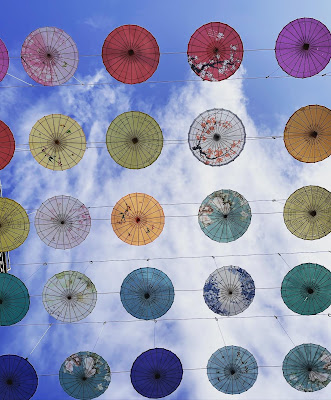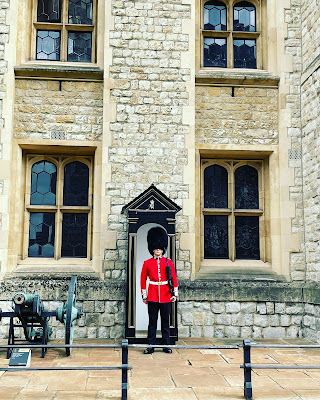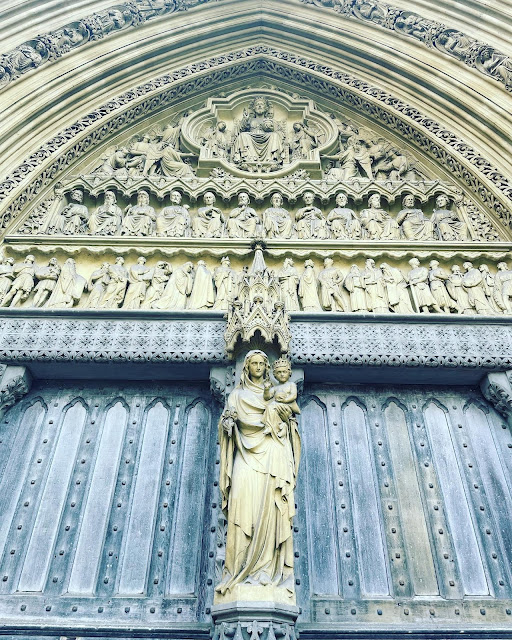12.07.2023 - 14.07.2023
23-29 Claremont Street is the street in Islington, London, where they filmed the exterior shots of Grimmauld Place in Harry Potter and the Order of the Phoenix (2007) and Deathly Hallows Part 1 (2010). It the Harry Potter universe, it is number 12 Grimmauld Place, the home of Harry’s godfather Sirius Black, concealed by magic between number 11 and 13 and therefore invisible to Muggles. After the return of Voldemort at the end of Goblet of Fire, the house becomes the headquarters for the Order of the Phoenix and is later a hideout for Harry, Ron and Hermione in Deathly Hallows Part 1.
St Pancras Renaissance London Hotel forms the frontispiece of St Pancras railway station in St Pancras, London. The station is one of the main rail termini in London and the final stop for international trains departing to Paris, Brussels, Amsterdam and other destinations in mainland Europe. It opened in 2011, and occupies much of the former Midland Grand Hotel designed by George Gilbert Scott which opened in 1873 and closed in 1935. The building as a whole including the apartments is known as St Pancras Chambers and between 1935 and the 1980s was used as railway offices. The upper levels of the original building were redeveloped between 2005 and 2011 as apartments by the Manhattan Loft Corporation. Its clock tower stands at 76 m (249 ft) tall, with more than half its height usable.
King's Cross also known as London King's Cross, is a passenger railway terminus in the London Borough of Camden, on the edge of Central London. It is in the London station group, one of the busiest stations in the United Kingdom and the southern terminus of the East Coast Main Line to Yorkshire and the Humber, North East England and Scotland. Adjacent to King's Cross station is St Pancras International, the London terminus for Eurostar services to continental Europe. Beneath both main line stations is King's Cross St Pancras tube station on the London Underground, combined, they form one of the country's largest and busiest transport hubs. The station became well known for its association with the Harry Potter books and films, particularly the fictional Platform 9 3⁄4.
Chinatown is an ethnic enclave in the City of Westminster, London, bordering Soho to its north and west, Theatreland to the south and east. The enclave currently occupies the area in and around Gerrard Street. It contains a number of Chinese restaurants, bakeries, supermarkets, souvenir shops, and other Chinese-run businesses. The first Chinatown was located in Limehouse in the East End.
Leicester Square is a pedestrianised square in the West End of London, England. It was laid out in 1670 as Leicester Fields, which was named after the recently built Leicester House, itself named after Robert Sidney, 2nd Earl of Leicester. The square was originally a gentrified residential area, with tenants including Frederick, Prince of Wales and the artists William Hogarth and Joshua Reynolds. It became more down-market in the late 18th century as Leicester House was demolished and retail developments took place, becoming a centre for entertainment. Several major theatres were built in the 19th century, which were converted to cinemas towards the middle of the next. Leicester Square is the location of nationally significant cinemas such as the Odeon Leicester Square, Empire, Leicester Square, which are often used for film premieres. The nearby Prince Charles Cinema is known for its screenings of cult films and marathon film runs. The square remains a tourist attraction which hosts events, including for the Chinese New Year. The square has always had a park in its centre, which was originally Common land. The park's fortunes have varied over the centuries, reaching near dilapidation in the mid-19th century after changing ownership several times. It was restored under the direction of Albert Grant, which included the construction of four new statues and a fountain of William Shakespeare.
Gielgud Theatre is a West End theatre, located on Shaftesbury Avenue, at the corner of Rupert Street, in the City of Westminster, London. The house currently has 986 seats on three levels. The theatre was designed by W. G. R. Sprague and opened on 27 December 1906 as the Hicks Theatre, named after Seymour Hicks, for whom it was built. The first play at the theatre was a hit musical called The Beauty of Bath co-written by Hicks. During reconstruction of Shakespeare's Globe theatre on the South Bank, in 1994 the theatre was renamed the Gielgud Theatre in honour of John Gielgud.
River Thames known alternatively in parts as the River Isis, is a river that flows through southern England including London. At 215 miles (346 km), it is the longest river entirely in England and the second-longest in the United Kingdom, after the River Severn. The river rises at Thames Head in Gloucestershire and flows into the North Sea near Tilbury, Essex and Gravesend, Kent, via the Thames Estuary. From the west it flows through Oxford (where it is sometimes called the Isis), Reading, Henley-on-Thames and Windsor. The Thames also drains the whole of Greater London.
Tower of London officially His Majesty's Royal Palace and Fortress of the Tower of London, is a historic castle on the north bank of the River Thames in central London, England. It lies within the London Borough of Tower Hamlets, which is separated from the eastern edge of the square mile of the City of London by the open space known as Tower Hill. It was founded toward the end of 1066 as part of the Norman Conquest. The White Tower, which gives the entire castle its name, was built by William the Conqueror in 1078 and was a resented symbol of oppression, inflicted upon London by the new Norman ruling class. The castle was also used as a prison from 1100 (Ranulf Flambard) until 1952 (Kray twins), although that was not its primary purpose. A grand palace early in its history, it served as a royal residence. As a whole, the Tower is a complex of several buildings set within two concentric rings of defensive walls and a moat. There were several phases of expansion, mainly under kings Richard I, Henry III, and Edward I in the 12th and 13th centuries. The general layout established by the late 13th century remains despite later activity on the site. After the Second World War, damage caused during the Blitz was repaired, and the castle reopened to the public. Today, the Tower of London is one of the country's most popular tourist attractions.
Whitehall Gardens was originally a pleasure garden used by the late Tudor and Stuart monarchs of England. It was created under Henry VIII and was expanded and improved under his successors, but lost its royal patronage after the Palace of Whitehall was almost totally destroyed by fire in 1698. From the start of the 18th century onwards, the garden went through major changes as it fell into neglect. It was painted in 1747 by Canaletto during a period of transition, as Westminster was being transformed by the construction of new buildings and roads. By the start of the 19th century it had been redeveloped as the site for a row of townhouses, some of which were occupied by prime ministers seeking homes near the government buildings nearby. Three statues stand within grassed islands commemorate William Tyndale (1494-1536), Sir Henry Bartle Frere (1815-1885) and General Sir James Outram (1803-63).
Westminster Abbey formally titled the Collegiate Church of Saint Peter at Westminster, is an Anglican church in the City of Westminster, London, England. Since 1066, it has been the location of the coronations of 40 English and British monarchs and a burial site for 18 English, Scottish and British monarchs. At least 16 royal weddings have occurred at the abbey since 1100.The abbey is the burial site of more than 3,300 people, many of prominence in British history: monarchs, prime ministers, poets laureate, actors, scientists, military leaders, and the Unknown Warrior.































































